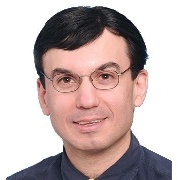Feature Papers of Micromachines in 'Materials and Processing' 2023
A special issue of Micromachines (ISSN 2072-666X). This special issue belongs to the section "D:Materials and Processing".
Deadline for manuscript submissions: closed (31 December 2023) | Viewed by 4281
Special Issue Editor
Interests: bio-micro-electro-mechanical systems (BioMEMS); biomedical and implantable devices; biosensors; organs-on-a-chip; micro- and nanosensors for monitoring organs-on-a-chip; flexible electronics and sensors for wound healing; packaging and encapsulation of implantable devices; biomaterials; biofabrication
Special Issues, Collections and Topics in MDPI journals
Special Issue Information
Dear Colleagues,
We are pleased to announce this Special Issue entitled "Feature Papers of Micromachines in Materials and Processing 2023". In the past several years, we have worked in conjunction with excellent scholars and research groups to publish several high-impact high-quality manuscripts, which have received a large number of views and citations. Our goal is to publish latest scientific and technological advances in areas related to micro/nanofabrication with applications in biomedical sciences and biology, materials, semiconductors, photonics, and energy, through which we hope to make great contributions to the scientific community.
This Special Issue will be a collection of high-quality papers from excellent scholars around the world. Both original research articles and comprehensive review papers are welcome. The papers will be published free of charge, with full open access after peer review to benefit both authors and readers.
You are welcome to send short proposals for submissions of feature papers to our Editorial Office (aria.zeng@mdpi.com) before submission. The proposals will first be evaluated by the Editors. Please note that the selected full papers will still be subject to a thorough and rigorous peer review.
We look forward to receiving your excellent work.
Dr. Mehmet Remzi Dokmeci
Guest Editor
Manuscript Submission Information
Manuscripts should be submitted online at www.mdpi.com by registering and logging in to this website. Once you are registered, click here to go to the submission form. Manuscripts can be submitted until the deadline. All submissions that pass pre-check are peer-reviewed. Accepted papers will be published continuously in the journal (as soon as accepted) and will be listed together on the special issue website. Research articles, review articles as well as communications are invited. For planned papers, a title and short abstract (about 100 words) can be sent to the Editorial Office for announcement on this website.
Submitted manuscripts should not have been published previously, nor be under consideration for publication elsewhere (except conference proceedings papers). All manuscripts are thoroughly refereed through a single-blind peer-review process. A guide for authors and other relevant information for submission of manuscripts is available on the Instructions for Authors page. Micromachines is an international peer-reviewed open access monthly journal published by MDPI.
Please visit the Instructions for Authors page before submitting a manuscript. The Article Processing Charge (APC) for publication in this open access journal is 2600 CHF (Swiss Francs). Submitted papers should be well formatted and use good English. Authors may use MDPI's English editing service prior to publication or during author revisions.
Keywords
- biomedical microdevices
- micro/nanofabrication
- BioMEMS
- organs-on-a-chip
- minimally invasive devices
- wearable devices
- biosensors
- 3D bioprinting
- MEMS and CMOS technologies
- point of care devices
- III–V devices, thin film transistors
- artificial intelligence with applications to micro/nanofabrication and sensors






